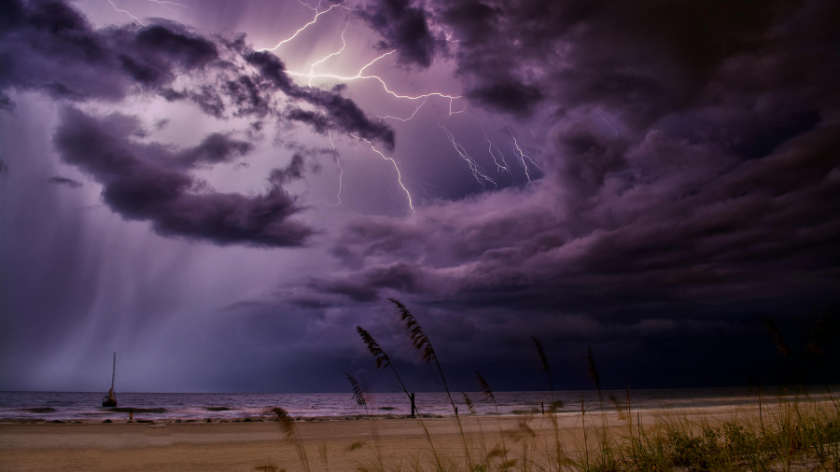
With climate change bringing more frequent and intense storms, floods, heat waves and other extreme weather events, Harrogate homeowners know that changes need to be made to their properties.
By being proactive, you can minimise property damage, prevent injuries, and ensure your family's safety during severe conditions.
Conduct A Comprehensive Home Inspection
The first step is to identify any existing vulnerabilities in your home's structure, energy systems, drainage, and landscaping that could be exacerbated by extreme weather. Hire a qualified inspector to thoroughly examine your property and provide recommendations.
Key areas to assess include the roof, windows, doors, foundation, gutters, electrical wiring, plumbing, heating/air-conditioning units, trees/shrubbery near the home, and site grading/drainage. Addressing issues like loose shingles, cracked windows, improper insulation, and clogged gutters can prevent minor problems from escalating during a storm.
Check The State Of Your Roof
Your roof bears the brunt of punishing winds, rain, hail and accumulating snow loads. Missing, curled or damaged shingles and loose flashings create opportunities for leaks to develop. Inspect from the ground using binoculars and hire a professional roofer to repair any trouble spots.
Consider investing in a roof replacement using impact-resistant shingles, built to withstand hailstones and high winds. These stiffer, reinforced products resist cracking and stay firmly affixed during the worst Mother Nature dishes out. For extra protection, add a waterproof underlayment beneath the shingles.
If you’re looking for building and roofing materials, get in touch with Tradefixdirect.com. They have a range of trade-quality building and roofing supplies that are perfect for getting your roof in order.
Fortify Windows, Doors And Garage Doors
Powerful wind gusts can easily shatter windows and blow doors off their hinges, allowing destructive winds and rain inside. For windows, install impact-rated shutters or board them up before a storm. Modern shutter systems protect the glass while letting in some light.
Make sure all doors have secure frames properly anchored to the walls. Consider replacing exterior doors with impact-rated fibreglass or steel models designed to withstand high winds and flying debris. Do the same for the garage door, one of your home's most vulnerable areas.
Evaluate Drainage And Landscaping
During heavy rain or rapid snowmelt, it's vital that water can drain away from your home's foundation to prevent flooding and leaks. Grade the ground so it slopes at least 6 inches over 10 feet away from the house in all directions.
Clear leaves and debris from gutters and downspouts regularly so they can channel water at least 3 feet away from the home. Consider installing a French drain system around the foundation's perimeter to direct water into a low-lying area.
Trim shrubbery and trees with overhanging branches that could fall onto the roof, siding or windows during high winds or an ice storm. Plant trees at a proper distance of at least 20 feet from the home.
Protect Utilities And Essential Systems
Extreme temperatures, strong winds and flooding can severely damage heating/cooling units, smart home equipment, generators, fuel tanks and other crucial systems, causing extended outages. Raise appliances like AC units onto platforms above expected flood levels.
Install easily accessible shutoff valves for gas lines and cover outdoor vents/intakes to prevent water intrusion. Store backup power sources like generators in sheltered areas. Use UL-listed surge protectors on electrical/data lines to safeguard equipment from lightning strikes and grid fluctuations.
Ensure Proper Insulation And Energy Efficiency
A well-insulated, tightly sealed home provides protection from temperature extremes and driving winds. In winter, proper insulation prevents cold drafts and ice dams while reducing strain on heating systems during cold snaps. In summer, it keeps interiors cooler, reducing AC demands on sweltering days.
Thoroughly insulate attics, walls, crawlspaces and foundations. Use weatherstripping and caulk around windows, doors and utility access points. Upgrade to energy-efficient windows and consider installing a cool roof with reflective properties for sun-exposed areas.
Secure Outdoor Furniture And Equipment
Anything left unsecured outside can become a dangerous projectile in high winds. Well before a storm arrives, move loose furniture, grills, potted plants, yard decorations and children's toys inside or into a sheltered area like a shed.
If you have a patio, deck or pool area, remove and store any furniture cushions, area rugs and umbrellas that could get blown around. Use tie-down straps or anchor weights to secure larger items that can't be easily moved.
Install Backup Power Sources
Extended power outages are a common byproduct of severe weather events. To avoid being left in the dark, consider installing a permanent standby generator that is wired directly into your home's electrical system and automatically switches on when utility power is cut.
A more affordable option is a portable generator sized to run essential circuits for heating/cooling, lighting, refrigeration and medical equipment. Properly vent generators outside and away from doors/windows to avoid carbon monoxide poisoning. Install a transfer switch to prevent back-feeding power lines.
Create an Emergency Plan And Supply Kit
Even with excellent preparedness, some extreme weather such as last year’s Storm Babetmay require you to leave your home for an extended period or have emergency materials on hand. Put a plan in place that identifies rally points, evacuation routes, and family communications.
Stock up on essentials like non-perishable food, water, batteries, torches/lanterns, first-aid kit, tools, sandbags and plywood. Have portable radios, chargers and backup power banks ready. Put irreplaceable keepsakes in a waterproof container you can quickly grab if evacuating.


:format(jpeg):mode_rgb():quality(90)/discogs-images/R-6564043-1456020541-9716.jpeg.jpg)












